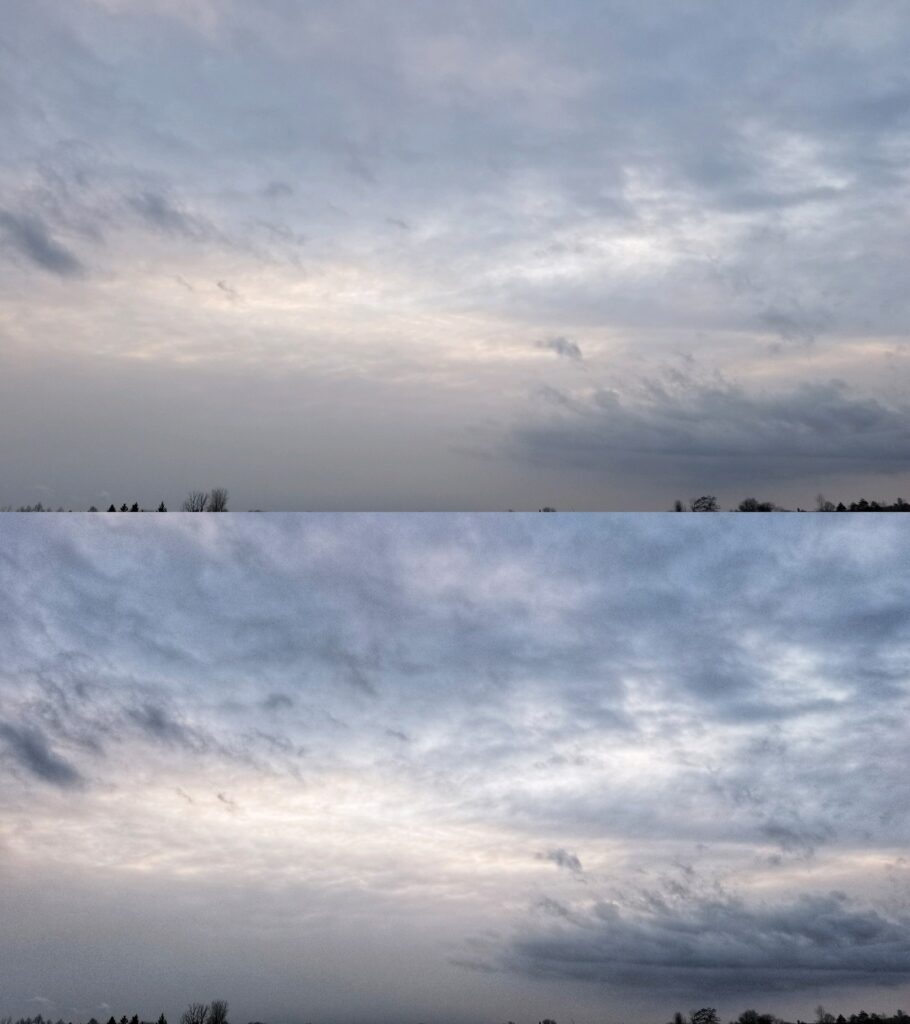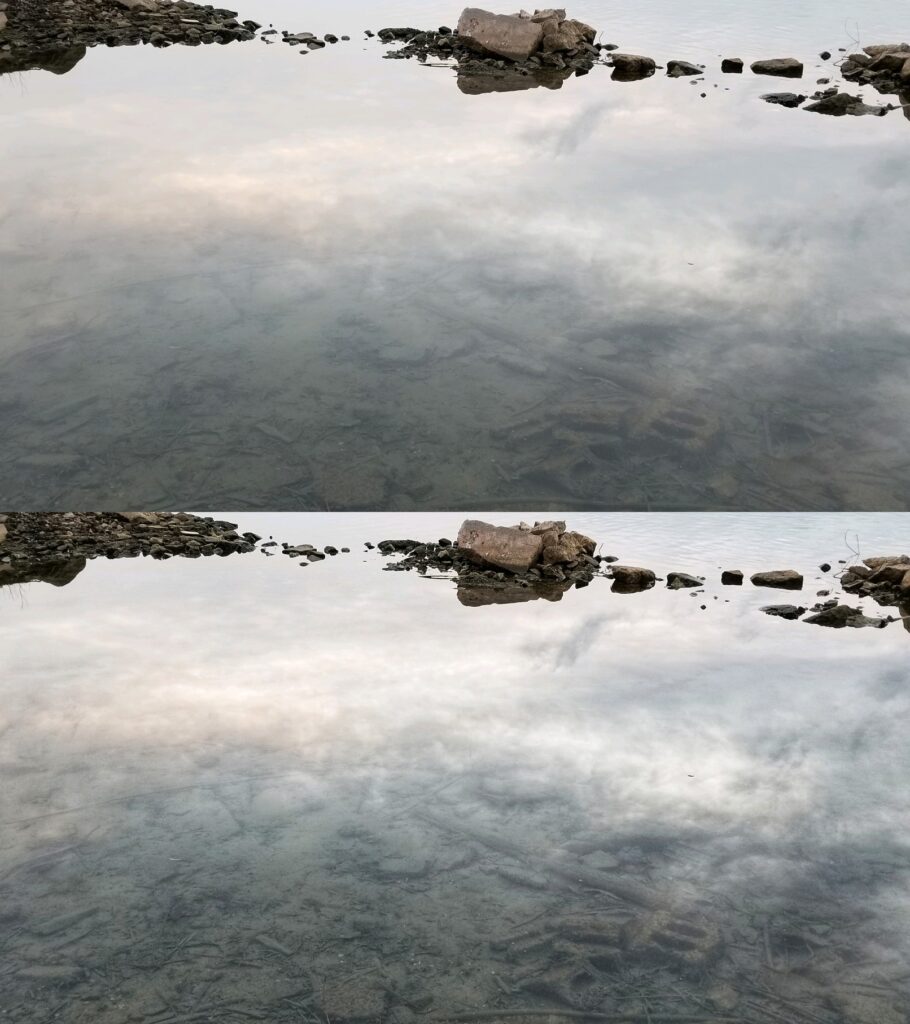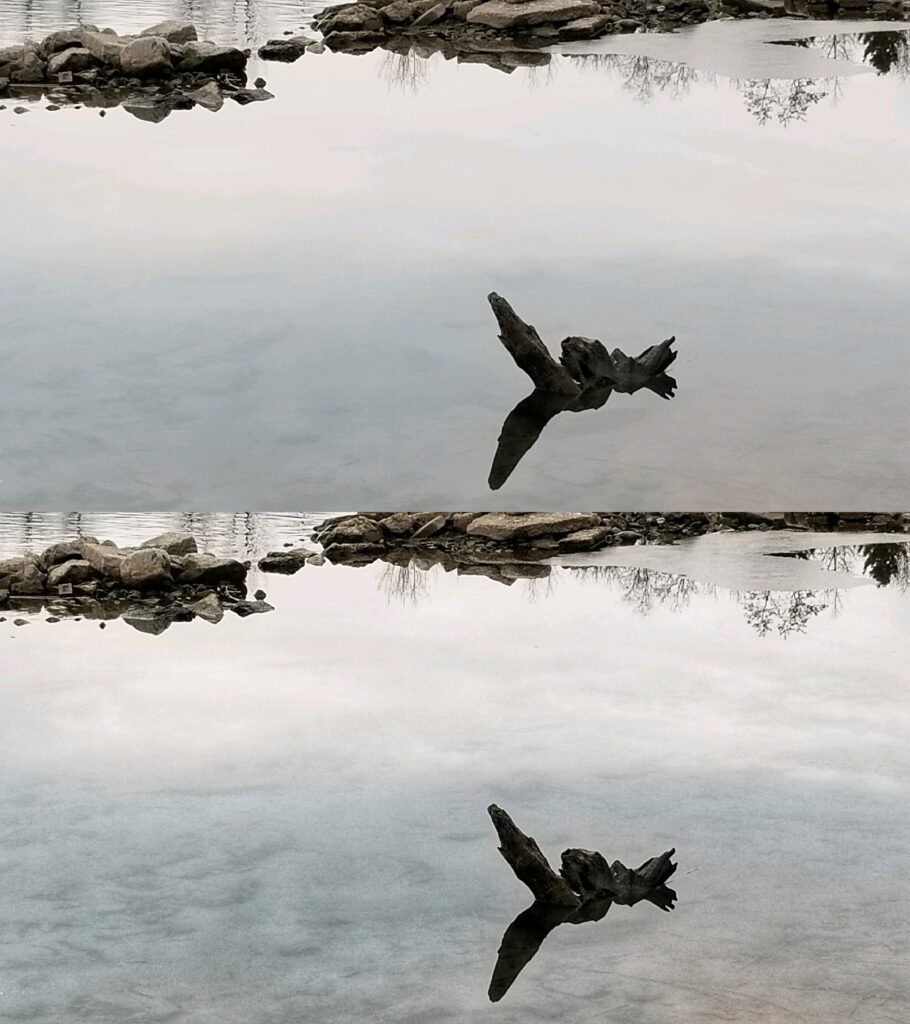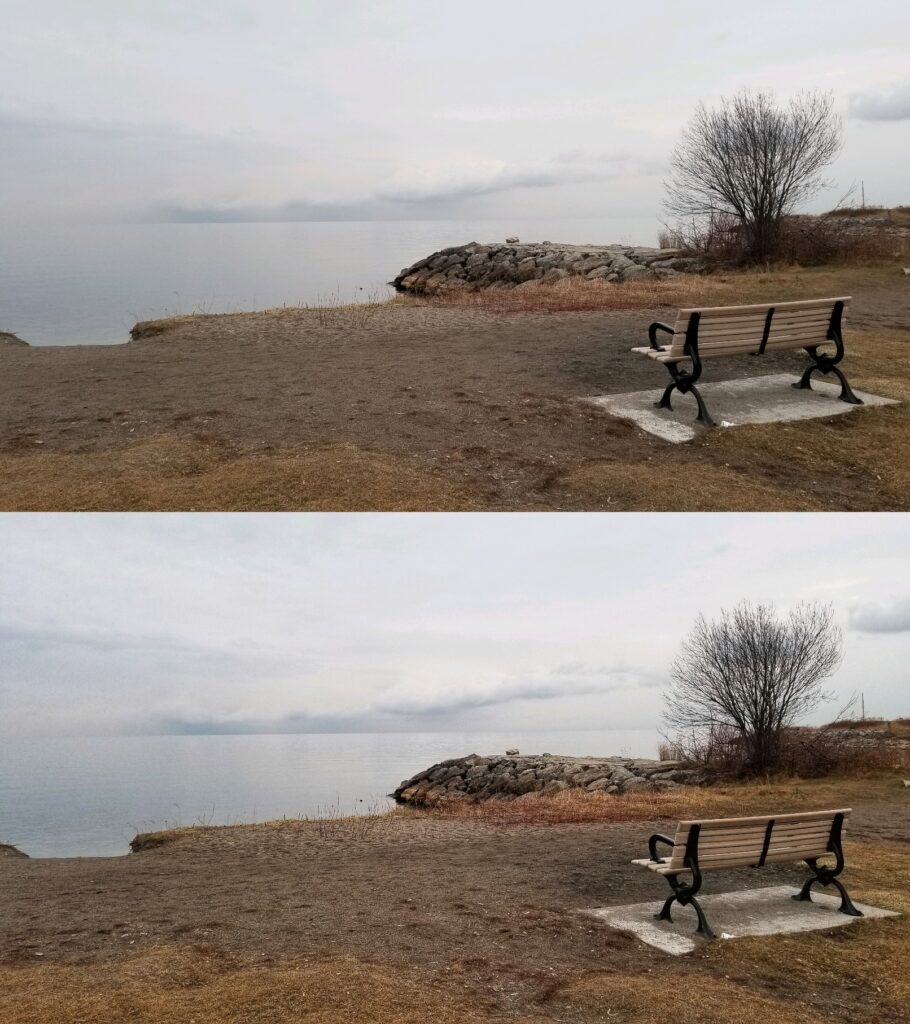I realized some years ago that I had long preferred to not touch up my photos. I would sometimes need to–cropping is not uncommon to lop off bits distracting from the focus, of course; and I knew that certain photo printing services (remember those, fellow old people?) would tend to print a bit dark compared to what I’d see on my screens, so I would sometimes lighten photos sent their way to get a satisfying final result–but generally, it was a kind of “what I shot is what I got” affair.
All the pics on my Photos page, for instance, are to the best of my knowledge, cropping and some black-and-white conversions aside, exactly as I shot them.
Yesterday my wife and daughter and I took a walk for a couple of hours through a big local park. The level of Lake Ontario is down the better part of a metre from its common levels, so there are a few nooks and crannies now available for exploring that are normally under water. One of those areas offered some great views of not only the unusual clouds and colouring of the sky, but also of a little inlet of water that was dead calm and reflected that sky amid rocks and jutting, waterlogged branches.
I took advantage and got several photos, pleased with such an unexpected bounty of great shots to take.
But when I looked through the photos last night, I was disappointed with all of them.
While it had been quickly approaching dusk, the light in the photos was somehow even more anemic, the contrasts not standing out, and all of the colours were oddly muted. In short, what I had seen was done no justice by what the camera captured.
That in itself isn’t new to me. I’ve long been disappointed in my shots of sunrises and sunsets, for instance–the photos never match the glory of what I see–and my shots of the moon, no matter how impressive it may sometimes appear, have never been more than blurry bright circles in the sky. That’s all about lighting and shutter speed and camera settings and details I’ve never taken the time to learn. Understood.
The ones I took yesterday, however, were disappointing because I know I’ve taken better shots of similar stuff in similar lighting, and they were generally much better. For all the picturesque aspects I had gotten a chance to see in the park, the results of trying to capture them were wholly disappointing. (A somewhat different experience than being happy with whatever I could get, mind you, here being certain that what I got had every right to be pretty good and then finding none of it was.)
Out of curiosity, I ran the photos through a quick pre-set filter in a popular photo editing app called Snapseed, just to see what the results would be.
And I was truly impressed by all of the outcomes.
They didn’t look fake, they didn’t look forced, they didn’t look… made. In fact the most surprising part of the results was that they looked like what I had seen. The colours were more true than what my original photos showed, the ambient light was more accurate, the variation and depth of contrasts stood out more, the water was more clear, just as it had all been in real life.
Take a look at these before and after samples. (If you can’t view the full photos on this page, right-click on each one and select View Image and it’ll show you the full photo, then click the Back button in the browser to get back to this page.) In each pair, the top photo is the original I took and the bottom one is from running the original through a quick filter edit in Snapseed.
Beauty is in the eye of the beholder, but ladies and gentlemen of the jury, I ask you to select which of each pair looks better to you.




Which brought me to an interesting crossroads. Never having modified so much about photos before saving them (to say nothing of posting them here), was that something I was okay doing now?
And it’s not a big deal, of course–there are countless more important things in life to burn calories on–but it was an interesting bit of introspection: Why was it I had stuck all this time to not altering photos I keep, let alone publicize?
It wasn’t a matter of “purity”, or any such snobby outlook. It doesn’t bother me when others do it (unless it’s done poorly). There’s plenty of photography out there that I like that has been touched-up or adjusted in even major ways. Hell, professional photographers of all stripes have their images modified in tiny or significant ways as a matter of course before they’re finally sold or published. Lighting is changed. Tones are changed. Extraneous bits or backgrounds are removed completely. Colours are modified to pop a bit more, or maybe to be the only part of the image that even is colour…
And after all, it’s not uncommon for art all kinds to be modified until it’s done (or, to paraphrase a quote I heard, until it’s ready to be walked away from). Music, dance, writing, illustration, painting, sculpting, stage plays, movies… it all starts as one thing and is added to and altered for hours or days or months or more, until the artist/person making the call says it’s ready, or is at least as ready as it ever will be.
Why should photography be any different? And as said above, even at the professional level, it in fact isn’t any different.
I think… I think?… that it may just be that I’ve been happy enough knowing that most of what I shoot won’t make the cut to be shown around anywhere. And it could be that yesterday’s surprise setting and opportunities for photos seeming like such an artistic windfall, but all of the photos turning out so subpar, was disappointing enough that I finally wanted to dip a toe into the waters of what could help make some lemonade out of those lemons.
So I do believe I’ve made my choice at that crossroads: I’m pleased when I find the particularly appealing photos from what I shoot just as they are, but I’m removing the self-imposed obstacle of avoiding editing them as needed to help turn them into what I want them to show.
It’s important for art to be sincere. For it to reflect not necessarily the truth of exactly what was seen or heard or experienced, but to relay what was felt at those times. And if all it takes to help me capture that in photos is some editing, I’m all for it.
Art is all about capturing an impression, vision, feeling, sentiment, or statement. Not only for the artist but also for communicating it to the viewer as an equal participant in the creation. To adjust or modify your photos to more easily relay your feeling in that moment is not only OK, it is integral to the purpose of art itself.
Be brave – step out and step forward, use whatever means are available to you (including editing techniques) to keep your art true to YOU. That’s what art is all about!
Too true!
Thanks for the encouragement.